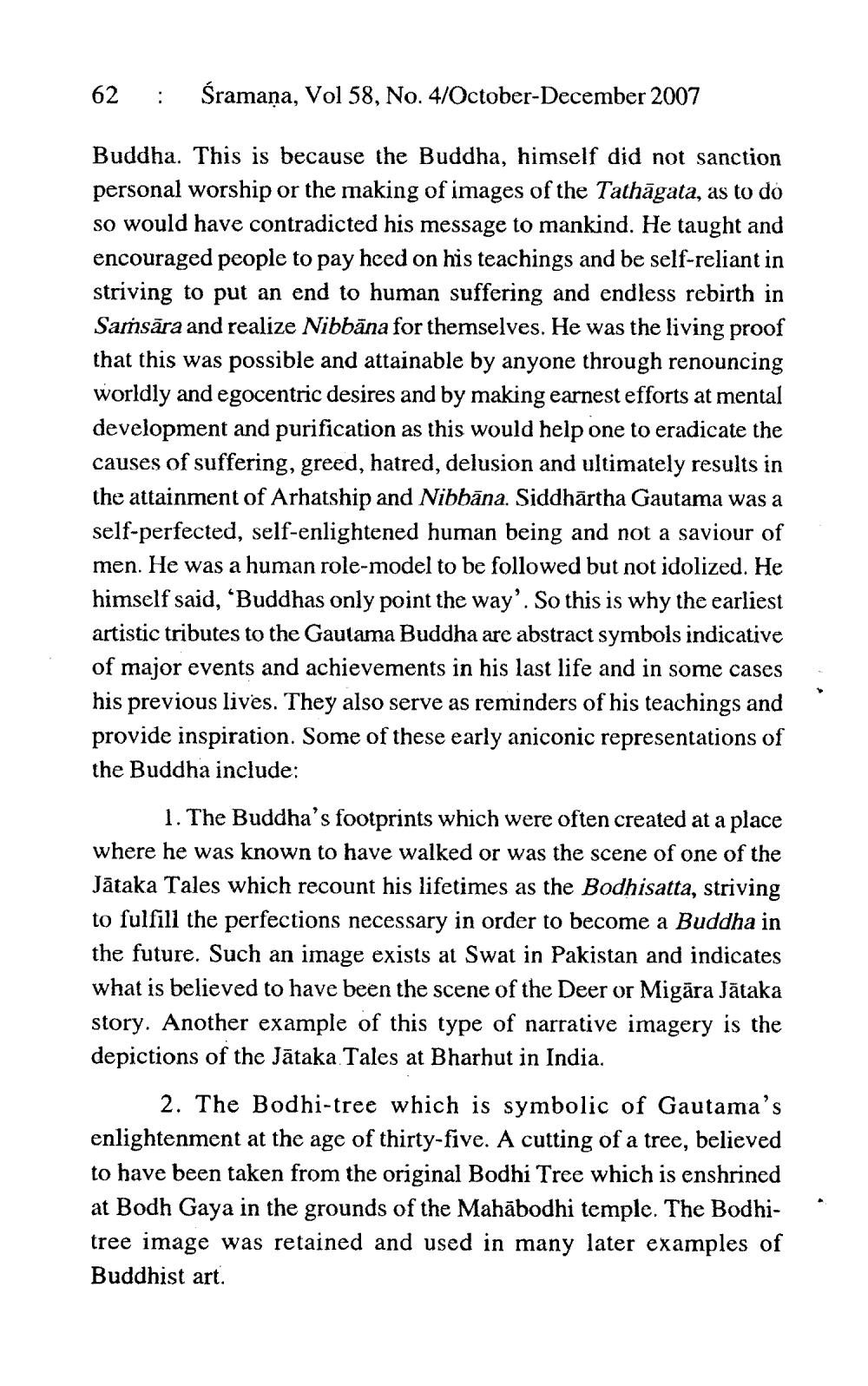________________
Śramaṇa, Vol 58, No. 4/October-December 2007
Buddha. This is because the Buddha, himself did not sanction personal worship or the making of images of the Tathāgata, as to do so would have contradicted his message to mankind. He taught and encouraged people to pay heed on his teachings and be self-reliant in striving to put an end to human suffering and endless rebirth in Samsara and realize Nibbana for themselves. He was the living proof that this was possible and attainable by anyone through renouncing worldly and egocentric desires and by making earnest efforts at mental development and purification as this would help one to eradicate the causes of suffering, greed, hatred, delusion and ultimately results in the attainment of Arhatship and Nibbāna. Siddhārtha Gautama was a self-perfected, self-enlightened human being and not a saviour of men. He was a human role-model to be followed but not idolized. He himself said, 'Buddhas only point the way'. So this is why the earliest artistic tributes to the Gautama Buddha are abstract symbols indicative of major events and achievements in his last life and in some cases his previous lives. They also serve as reminders of his teachings and provide inspiration. Some of these early aniconic representations of the Buddha include:
62
1. The Buddha's footprints which were often created at a place where he was known to have walked or was the scene of one of the Jātaka Tales which recount his lifetimes as the Bodhisatta, striving to fulfill the perfections necessary in order to become a Buddha in the future. Such an image exists at Swat in Pakistan and indicates what is believed to have been the scene of the Deer or Migära Jātaka story. Another example of this type of narrative imagery is the depictions of the Jātaka Tales at Bharhut in India.
2. The Bodhi-tree which is symbolic of Gautama's enlightenment at the age of thirty-five. A cutting of a tree, believed to have been taken from the original Bodhi Tree which is enshrined at Bodh Gaya in the grounds of the Mahabodhi temple. The Bodhitree image was retained and used in many later examples of Buddhist art.




